Buying Guide for Cameo MBSE
A comprehensive guide to purchasing Cameo MBSE as a defense industry supplier
Roadmap to a Successful Cameo Purchase
If model-based systems engineering (MBSE) is new to you, you may be lost as to how a Cameo purchase should go. What should you expect? What questions do you need to ask? What's appropriate pricing? How about implementation?
Whether you’ve decided that high-end MBSE is right for your needs, or you have a contract mandating MBSE (maybe even Cameo specifically) for the project, the following steps will help you make a successful, informed purchase.
- Understand MBSE as a concept and process
- Learn about Cameo as an MBSE solution
- Research implementation and training options
- Request a demo
- Request a quote
- Purchasing
- Get started
- Keep going with support
1. Understand MBSE as a concept and process
What is Model-Based Systems Engineering?
MBSE, according to the International Council on Systems Engineering’s (INCOSE), is “the formalized application of modeling to support system requirements, design, analysis, verification, and validation activities beginning in the conceptual design phase and continuing throughout development and later life cycle phases.” The drive to standardize MBSE can be traced back to INCOSE’s desire to customize the Unified Modeling Language (UML)—used to create software architecture—into the Systems Modeling Language (SysML)—used today as the standard for MBSE. The Object Management Group (OMG) is the official author of the language.
What Are the Benefits of MBSE?
By replacing traditional systems engineering with a model-based approach, programs are able to replace master documents with reusable, easy-to-follow models of the entire system. This allows individual disciplines and various stakeholders to—in a single model—understand the complexity of a given system and track how all sub-systems interact. MBSE will enable the early identification of risk, issues, and opportunities, leading to program savings throughout the lifecycle of the program.
Additional Reading & Viewing
Whitepapers, blog posts, product matrices, product pages, and videos can help you learn about MBSE and how it can be integrated at your company.
What is MBSE? What are the pillars of MBSE? What MBSE methodology is best for my company? What tools implement SysML? How do I learn SysML?
These are some of the questions to consider. Consult web content and/or an MBSE partner like GoEngineer. We offer these for you to get started:
eBook
Model-Based Systems Engineering: The Key to On-Time Product Launches

How do you improve your product development processes? Read this eBook for ways to improve complex systems development. (Hint: Integration is not the answer.)
Discover two case studies as well: Bosch Car Multimedia & industrial equipment manufacturer CLAAS.
Whitepaper
Simplifying Model-Based Systems Engineering
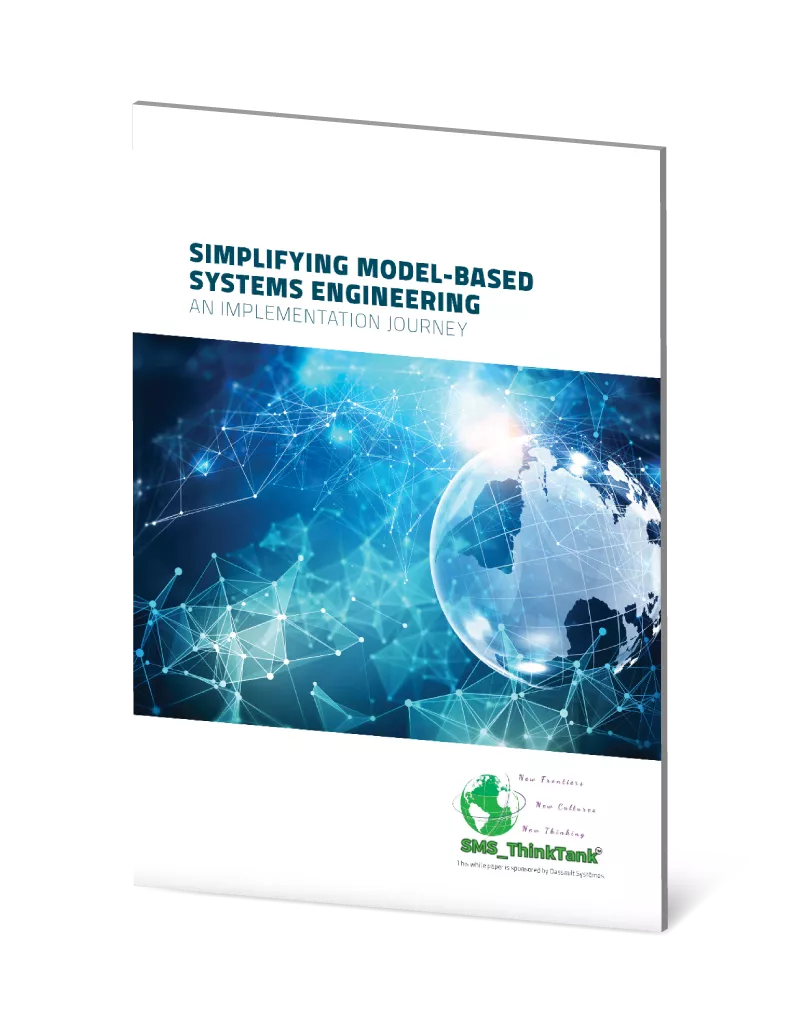
Principals, Edward Ladzinski and Frank Popielas of SMS ThinkTank say no two MBSE implementations will be identical. Learn the questions to consider in three key areas: organization, process, and technology.
On-Demand Webinar
A Beginners Guide: Model-Based Systems Engineering
What is systems engineering? Why is model-based systems engineering (MBSE) becoming a standard? How do I “do” MBSE? These elusive questions impede understanding and jeopardize the effective implementation of MBSE. This video addresses those questions in a digestible format for both technical and non-technical viewers.
2. Learn About Cameo as an MBSE solution
Since the acquisition of No Magic by Dassault Systèmes, No Magic's Cameo portfolio has been rebranded as CATIA No Magic. It's the exact same software, and you may see us refer to it by both names here.
Cameo/CATIA No Magic is the industry-leading, cross-platform, collaborative MBSE software environment, especially in defense-related industries. It provides the tools to define, track, and visualize all aspects of systems in standards-compliant, SysML-based models and diagrams. It also provides cross-cutting relationships for understanding upstream/downstream interactions and impact analysis. Additionally, Cameo was designed to evolve your digital thread without the need for replacing current software tools – from DOORS and Jama to MATLAB/Simulink, a host of integrations will support your current workflow.
Everything is based around the core MagicDraw desktop application, to which a user adds plugins that suit their needs, such as code generation, database architecture, system modeling and diagraming, etc. The most common of these plugin combinations are offered as bundles such as "Cameo Systems Modeler" and "Cameo Enterprise Architecture". The Cameo portfolio also has several plugins for special tasks like simulation, collaboration, or change management. You can learn more about all of these on our No Magic Cameo page.
3. Research Implementation & Training Options
Implementation
Cameo implementation varies based on your specific needs. For example, you can adopt a project-specific implementation and then move companywide. Depending on the complexity of your system and the timeline for completion, your modeling team may involve one expert modeler or a team of modelers using Teamwork Cloud for collaborative modeling. With the appropriate planning, Cameo client installations can be completed in 10 - 30 minutes, depending on license type. Server installation are more intense and can vary from one to several hours.
Training
You may require training for modelers in the three pillars of MBSE: language, tool, and methodology.
- SysML: Delligatti Associates is an excellent and highly recommended resource for learning SysML. They offer instructor-led and self-paced training classes. Their SysML class is a total of 48 hours. Dassault Systèmes also SysML learning in the 3DEXPERIENCE EDU space.
- Methodology/Tool: There are also multiple routes for learning MBSE, one of which is through the MagicGrid MBSE framework, detailed in the MagicGrid Book of Knowledge. This book is our recommendation if you wish to learn how to use Cameo (tool), OMG® SysML (language), and MagicGrid (methodology) in combination. This book provides comprehensive instructions, illustrated by the case study and is available for download below. Self-paced or instructor-led training utilizing the MagicGrid Book of Knowledge is available through GoEngineer.
Alternatively, Enola Technologies is an excellent resource for learning MBSE methodology. They offer instructor-led classes, which can last 3-5 days for a standard course. They provide virtual and on-site training options.
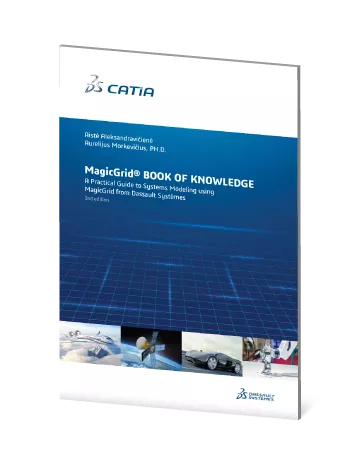
A Practical Guide to Systems Modeling
MagicGrid® BOOK OF KNOWLEDGe
The MagicGrid Book of Knowledge is a comprehensive guide to the CATIA MagicGrid framework to MBSE.
Illustrated using the easy-to-understand model of a real-world system, it is an answer to all the questions you may have, starting from “why” and ending with “how”, which few of today’s available sources of information can answer.
4. Request a demo
Meet with an official CATIA No Magic/Cameo reseller and discuss your specific needs. Outline specific questions about MBSE that you'd like answered and request a demonstration. See how Cameo works in a meeting with our engineers and learn everything you can from them. This ensures that the features and functionality match your expectations and needs.
Hardware benchmarking and purchasing advice can be critical for users who intend to include Teamwork Cloud in their portfolio. GoEngineer can provide general and/or quantified guidance on the appropriate level of software and hardware requirements for your use case.
5. Request a Quote
Once you have confirmed for yourself that the tools will work in your environment, the next step will be either a proposal or Cameo price quote that includes details of products to be purchased, all costs associated with the software, as well as any services recommended.
6. Purchasing
From there, the next step will follow the procurement process inside your organization, often meaning your company will issue a purchase order. Once there is confirmation of your intent to buy Cameo and you have arranged a payment method, we order the software on your behalf. It usually takes about three business days to process your order.
7. Get Started
After your order is completed, we will provide you with your license keys as well as additional information about getting started and installation support. We will also begin scheduling any services or training that were purchased.
8. Keep Going with Support
Call us when you need help! Our consulting engineers can assist with technical issues, bugs, difficult simulation modeling and execution, and more. GoEngineer customers also receive four free application mentoring sessions yearly.
FREQUENTLY ASKED QUESTIONS
- Cameo enforces the Systems Modeling Language, which is the first learning curve for implementing MBSE.
- You will also need to choose a methodology to follow when creating models across projects.
- Finally, you must learn some new menus and clicks in the tool, but understanding Cameo is relatively intuitive after the first two steps.
Yes, using Cameo DataHub. Cameo DataHub is a powerful data bridge solution that synchronizes requirements with other software. It allows the import/export, automatic synchronization and creation of references between Cameo, Rational® DOORS®, Enovia™ TRM, and CSV files. The 2024x Refresh1 version supports Jama.
Cameo Enterprise Architecture fully supports all architectural framework products ensuring you achieve project results. It offers the most robust standards-compliant DoDAF 2.0, MODAF, NAF 3, NAF 4, and UAF 1.1 via a UAF standardized solution.
Delligatti Associates is an excellent and highly recommended resource for learning SysML. They offer instructor-led and self-paced training classes. Dassault Systèmes also offers SysML learning in the 3DEXPERIENCE EDU space.
- Web Application Platform: The base for Cameo Collaborator for Teamwork Cloud and Teamwork Cloud Admin. apps.
- Teamwork Cloud Admin: A set of web applications necessary to manage Teamwork Cloud. The apps are accessible through a convenient web-based, mobile-friendly administrative interface for simple management of user accounts, projects, RBAC settings, LDAP integration, and more.
- Teamwork Cloud: A model repository that enables parallel modeling, model storage, and version control with strict yet flexible access control.
- Cameo Collaborator for Teamwork Cloud: A web-based product designed to present models in a simplified form for stakeholders, sponsors, customers, and engineering teams. In addition to the commenting capability enabling you to review models and leave feedback, it also allows editing models directly on the web.
- Apache Cassandra: An open-source NoSQL distributed database that Teamwork Cloud uses as its storage engine.
Different configurations of Teamwork Cloud will have unique hardware and software requirements. It is important to understand your configuration before determining the system requirements.
You can track changes across baselines and revert to those changes at any point in your modeling process using Teamwork Cloud.
Teamwork Cloud will enable you, as a systems engineer, to share models across disciplines on your projects.
You can do this using Cameo Collaborator for Teamwork Cloud, which is a web-based solution for presenting models in a simplified form for other stakeholders, sponsors, customers, and engineering teams. It allows editing and reviewing models.
Cameo supports the following native integrations, depending on version:
- Jama Connect
- Syndeia
- PTC Codebeamer
- OMG ReqIF
- MATLAB/Simulink
- Microsoft Excel
- Microsoft Word
- Microsoft PowerPoint
- Adobe PDF
- Cadence PSpice
- Modelica
- Dymola
- Functional Mock-up Interface (FMI)
- 3DEXPERIENCE Process Composer
- 3DEXPERIENCE Product Architect
- 3DEXPERIENCE PDM & PLM
- Wolfram
How to Choose a No Magic/Cameo Solution
Which Solution is Right for You?
Selecting the right MBSE solutions depends on your company’s specific needs and use cases. Here are the details on Cameo's bundle & plugin-based portfolio.
Cameo Systems Modeler
Cameo Systems Modeler is a collaborative tool for model-based systems engineering built upon MagicDraw. It comes in two editions: Architect and Enterprise. The Architect edition bundles in the SysML plugin. The Enterprise edition also includes the Cameo Simulation Toolkit.
It's a popular choice for systems engineers who want to create SysML-compliant models without needing a specific architecture framework.
Cameo Enterprise Architecture
Cameo Enterprise Architecture, also built on MagicDraw, includes plugins for SysML, Cameo Data Modeler, Cameo Business Modeler, and various enterprise architecture frameworks like DoDAF 2, MODAF, NAF 3, and UAF.
It's the go-to tool for systems engineers who want to specify enterprise architecture frameworks and create data models using SysML.
Data Management with Cameo
Collaboration is a huge part of Cameo MBSE. Storage, management, and sharing of Cameo system models is best done through Teamwork Cloud , the official data management solution for Cameo. Teamwork Cloud is also offered at multiple levels. Your team size, internal IT setup, and cybersecurity needs will determine which level is appropriate for you.
What is the Price of No Magic/Cameo MBSE?
How Much Does Cameo Cost?
Cameo software can be purchased as a 12-month Term License, a Perpetual Standalone License, or a Shareable Network Perpetual License. For a new 12-month Term License:
- MagicDraw starts at $950
- Cameo Systems Modeler starts at $1,266
- Cameo Enterprise Architecture starts at $3,166
- Simulation Toolkit starts at $1,077
- Teamwork Cloud starts at $3,166
However, be sure to check out our CATIA Promotions page for the latest promotions and discounts.
All About Cameo Licensing
How Does Cameo Licensing Work?
Before you buy No Magic products, here is an overview of the types of licenses that are offered to best suit your needs. Contact a Cameo Sales Expert to discuss your unique needs.
Buy vs. Rent
When you are ready to purchase, there are multiple Cameo licensing options available including "term" licenses and "perpetual" licenses.
What is a Term License?
Cameo term licenses offer a short-term commitment with the flexibility to match your workload and expenses. They are available to rent in increments of 3 months or 12 months. Term licenses offer a considerably lower upfront initial investment that is attractive to startups or freelancers and customers who want to purchase Cameo for personal use.
For a full list of products available for term licensing and answers to some commonly asked questions, click the button below.
What is a Perpetual License?
There are two types of perpetual licenses to choose from: "standalone" and "network (sharable)".
A perpetual license, as the name implies, never expires and can be used indefinitely. Perpetual licensing with a subscription offers the lowest total cost of ownership over the long term. Customers get peace of mind knowing that the data and intellectual property that they create will always be accessible and available.
What is a Network (Sharable) License?
Cameo network licenses, often called "floating" or "sharable" licenses, allow you to share Cameo software with multiple users. The sharing relies on a network license manager utility that runs on a computer in the same network as the users. The users' computers can "check out" the network license one-at-a-time to use that Cameo product.
What is a Standalone License?
Standalone licenses, as the name implies, are intended for a single Cameo user. This is accomplished by tying the license to their device via an activation process. It is a one-time process that requires internet or email access. Once activated, you do not need to be online to use your software.
Do I need a dedicated server or PC for the License Server? Can I use a Virtual Machine?
A dedicated machine is not required for the license server. It really can be any PC on the network that is accessible by the client machines. With that said, it is suggested to have it on a server that is always on and accessible. Virtual machines are supported for use as the license server with the Flexnet license management software. The DSLS license management software does not currently support virtual machines.
Benefits of a SOLIDWORKS Subscription
Can You Buy SOLIDWORKS without a Subscription?
Yes, you can buy what is called a perpetual license of SOLIDWORKS without a subscription. However, yearly SOLIDWORKS Subscription includes support, upgrades, new versions, free certification exams, and free training to improve your performance and productivity with an intuitive 3D design experience, giving you a competitive advantage. You also receive free licenses for SOLIDWORKS Visualize Standard and SOLIDWORKS CAM Standard, as well as access to MySolidWorks where you can view 600+ product tutorial videos.
For a full list of the benefits included with a license on an active subscription, click the button below.
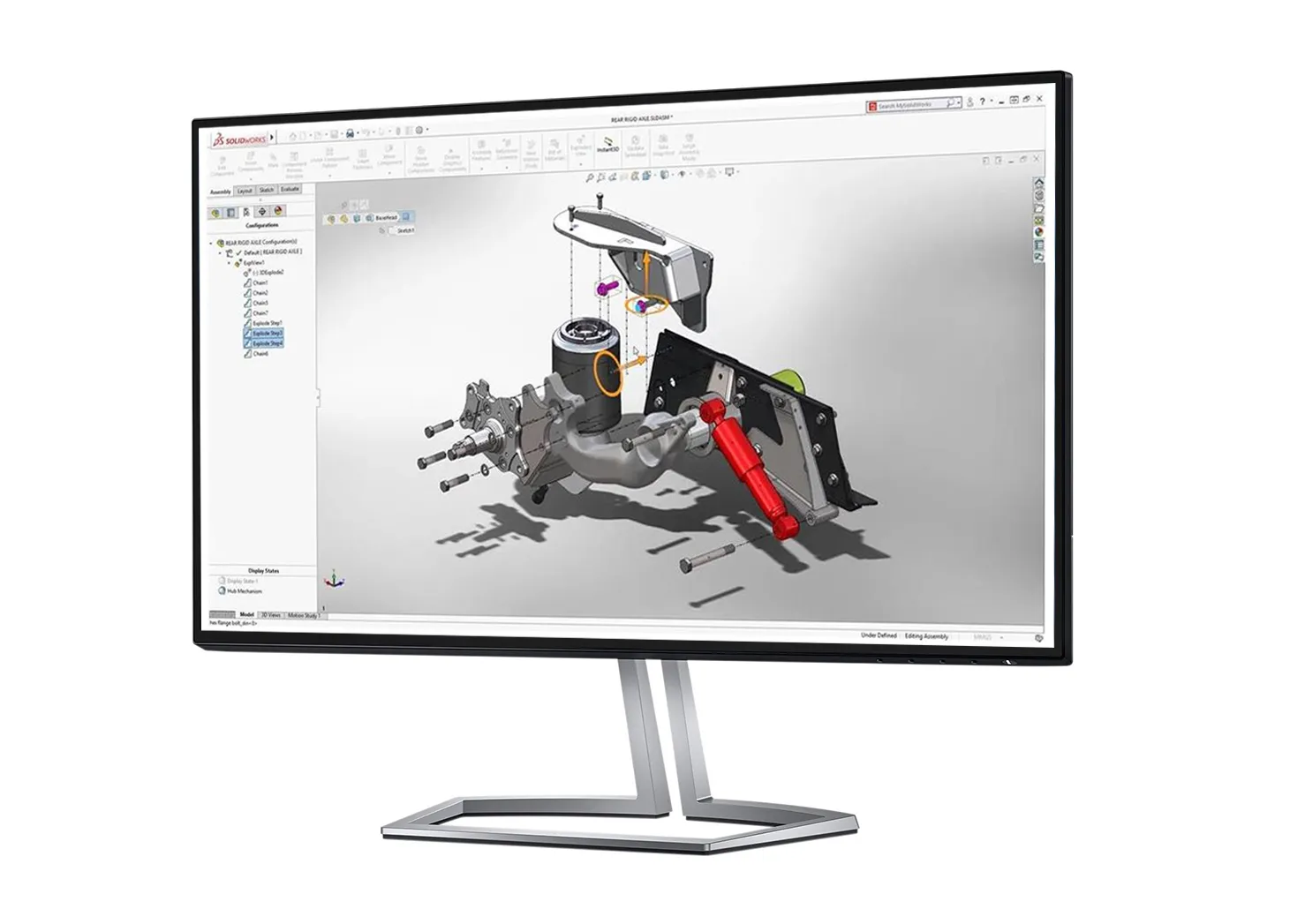
Options to Rent vs. Buy CATIA
Choosing a CATIA License Option
When you are ready to purchase CATIA, there are two different options: renting (also called term licensing) and buying (also called perpetual licensing).
What is a CATIA Term License?
CATIA term licenses offer a short-term commitment with the flexibility to match your workload and expenses. They are available to rent in increments of 3 months or 1 year.
Term licenses offer a considerably lower upfront initial investment that is attractive to startups or freelancers as well as to people who want to buy CATIA for personal use. We also highly recommend term licensing for all 3DEXPERIENCE products.
For a full list of products available for term licensing and answers to some commonly asked questions, click the button below.
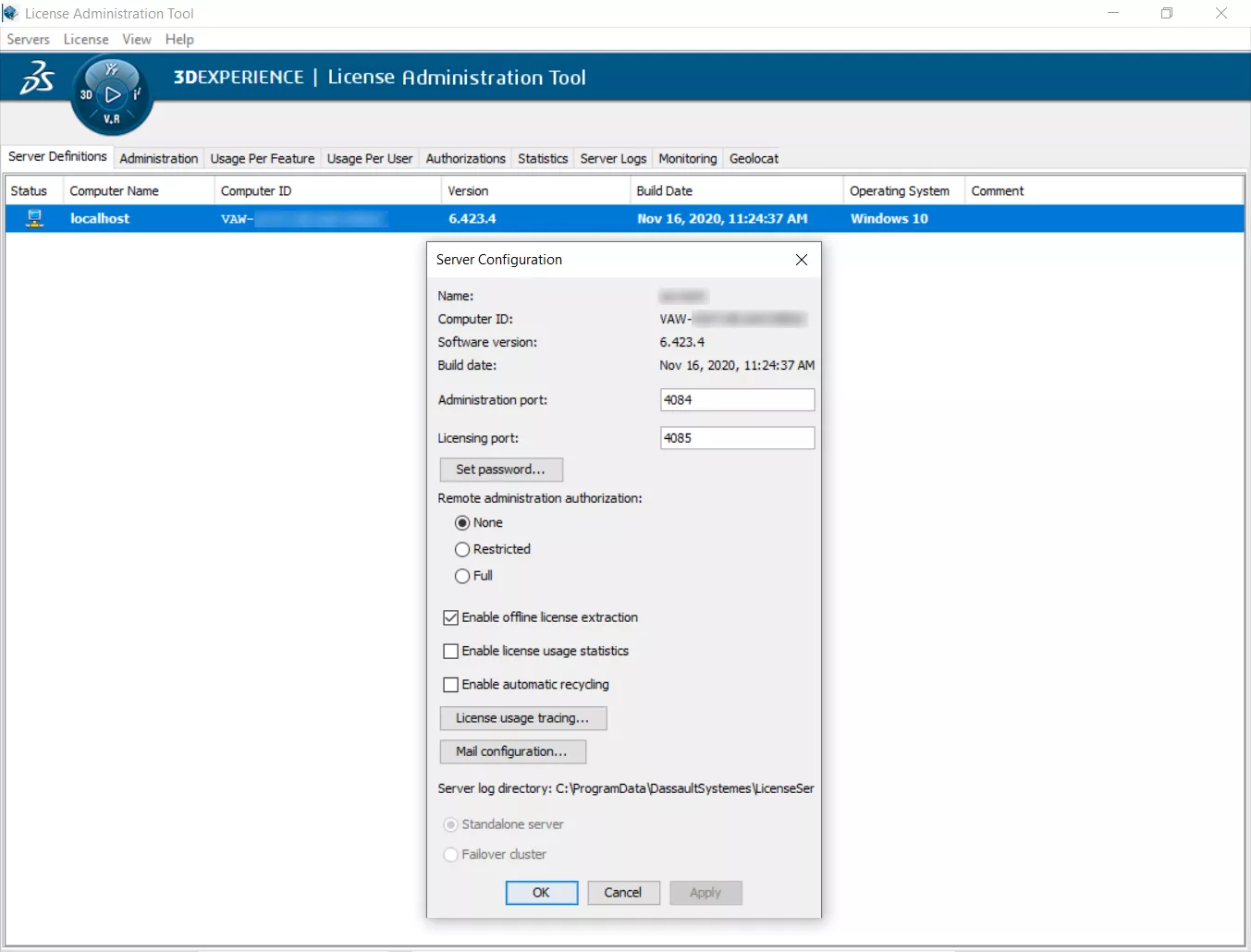
What is a CATIA Perpetual License?
A perpetual license is by far the most popular option for CATIA customers. A perpetual license, as the name implies, never expires and will run indefinitely. Perpetual licensing with subscription also offers the lowest total cost of ownership over the long term.
Dassault Systèmes has no plans to retire or stop selling perpetual licenses. They understand that perpetual and term serve different needs, and there is no one-size-fits-all approach for licensing.
Are CATIA Licenses Locked to a Single Machine?
No! CATIA V5 checks with a license server when it opens. You can make that license server any computer on your network that you wish, including the computer that you're running CATIA on. Whatever computer you're launching CATIA V5 on, if it can see that license server in the network, it will open.
3DEXPERIENCE CATIA licensing is attached to your 3DEXPERIENCE web login. As long as you can log into the 3DEXPERIENCE website, you can install and launch 3DEXPERIENCE CATIA and access your design data. Some companies elect to run their own private 3DEXPERIENCE cloud as the login point, which may or may not be accessible from outside of their on-premise network.
Do I Need a Dedicated Machine for the CATIA V5 License Server? Can I Use a Virtual Machine?
A dedicated machine is not required for the license server. It really can be any PC on the network that is accessible by the client machines. With that said it is suggested to have it on a server that is always on and accessible. Virtual Machines are currently not supported for use as the license server.
AsK a GOENGINEER EXPERT
Still Have Questions About Buying No Magic/Cameo?
Reach out to GoEngineer and an expert will follow-up with you.
Additional Resources
Take Advantage of GoEngineer’s Extensive Knowledge Base and Resources

Find a Solution
Our robust Knowledge Base contains over 12,000 resources to help answer your product design questions. From basic CAD questions to in-depth guides and tutorials, find your solution here. Find a Solution

PROFESSIONAL TRAINING
Improve your skills with professional training and certifications in SOLIDWORKS, CAM, 3D Printing, and 3D Scanning offered four ways: self-paced, online, on-site, or in-classroom. Certified Training Courses

BLOG
#1 Technical Resource Worldwide - Right at your fingertips. Search or browse through hundreds of SOLIDWORKS tips & tricks, additive manufacturing product developments, announcements, how-to guides, and tutorials. Blog

YouTube Channel
Our YouTube channel hosts hundreds of educational tutorials, product demonstrations, recorded webinars, and best practices for all of our products and services. GoEngineer's YouTube Channel
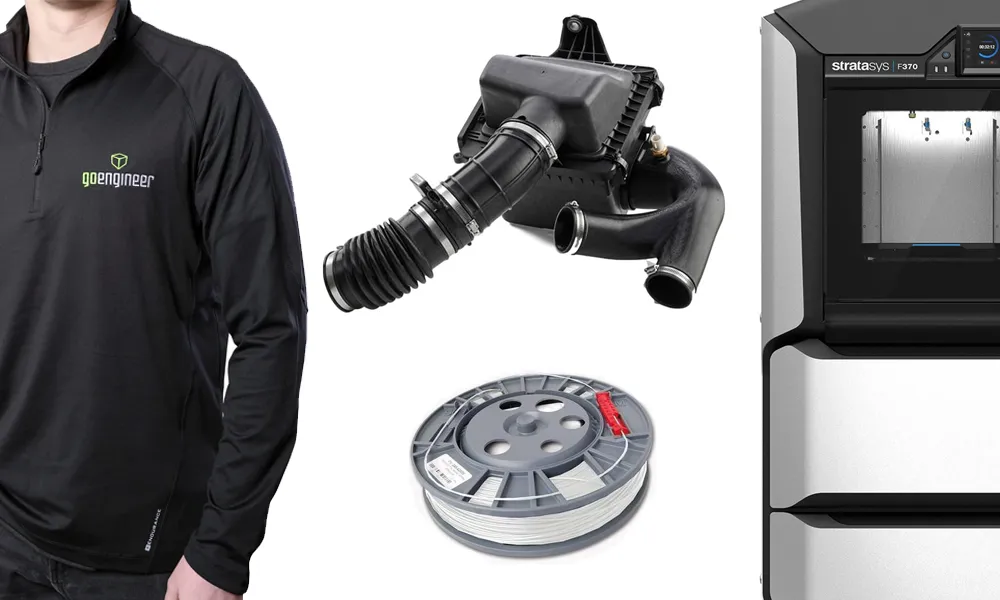
ONLINE STORE
Order 3D printing materials and consumables, enroll in SOLIDWORKS training classes, and buy official GoEngineer gear directly from our online store. Online Store
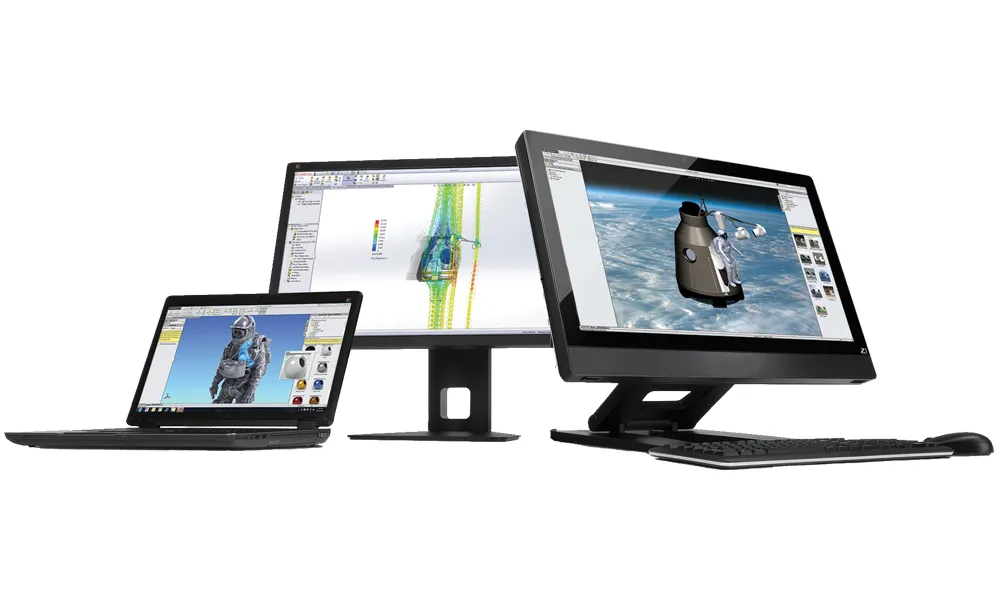
WEBINARS
Our engineering webinars are hosted by some of the top experts in the industry. They are always recorded, always free, and always offer a live Q&A. WEBINARS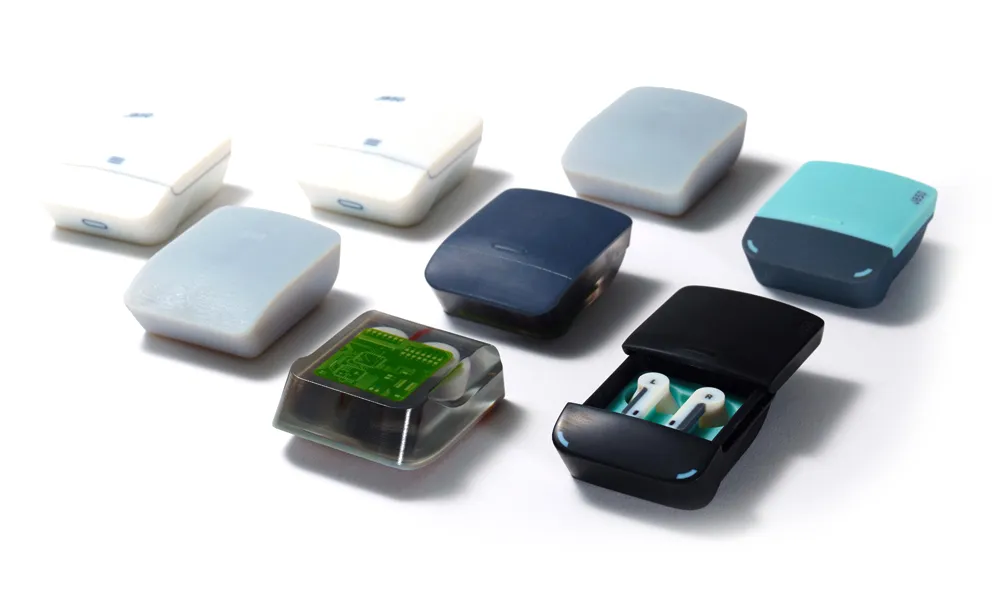
3D Printing Services
Need to 3D print a part? Our Additive Manufacturing experts will 3D print your part and deliver it to you using the latest technology on one of our professional FDM, PolyJet and SL 3D printers. 3D Printing Services


